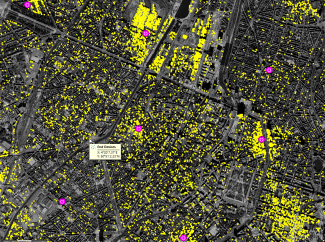The Internet of Things (IoT) is a network of physical devices, vehicles, sensors, actuators, and other objects with the ability to collect and exchange data.

What is IoT?
The IoT allows objects to be sensed and controlled remotely across existing network infrastructure, creating opportunities for more direct integration of the physical world into computer-based systems.
Devices may be connected to the internet over a regular wireline connection, Wi-Fi or cellular, or through Low Power Wide Area (LPWA) wireless technologies designed for the IoT. LPWA technologies allow to build wide area narrowband networks to connect objects through low-cost battery-based communications units. A number of LPWA technologies are available today to build and operate Low Power Wide Area Networks (LPWAN), such as LoRA,, Wireless MBus, and others.
NB-IoT is a standard defined by 3GPP that provides mobile operators with a natural path towards IoT through an LTE-based low power wide area technology.
5G allows extended IoT use-cases through additional features such as network slicing and low-latency connectivity.
What are the RAN planning requirements for IoT?
IoT RAN planning involves the design and optimisation of the Radio Access Network to support the communication needs of IoT devices.
IoT Network Requirements:
- Scalability
- Energy efficiency
- Reliable connectivity to accommodate the vast number of connected devices.
- Seamless coverage across several deployment environments, including challenging environments (indoor, deep indoor, underground …).
Special considerations are necessary to manage the diverse requirements of IoT technologies and applications, ensuring continuous and efficient operation.
RAN Planning for IoT with Atoll
Atoll comprehensive RAN planning suite includes LPWA (Low Power Wide Area) and NB-IoT (Narrowband IoT) modules, offering detailed coverage and capacity analysis tailored for a wide range of IoT technologies, including LoRa, Sigfox, LTE-M, and NB-IoT.
It accurately models both outdoor and indoor environments and predict signal propagation with high precision.
This ensures reliable communication for IoT devices across diverse and challenging areas, such as underground facilities, remote locations, and dense urban environments.
Additionally, Atoll's Automatic Cell Planning (ACP) feature can be used to optimise network performance and to select best sites for both densification and new deployments.
Further information about RAN Planning :

